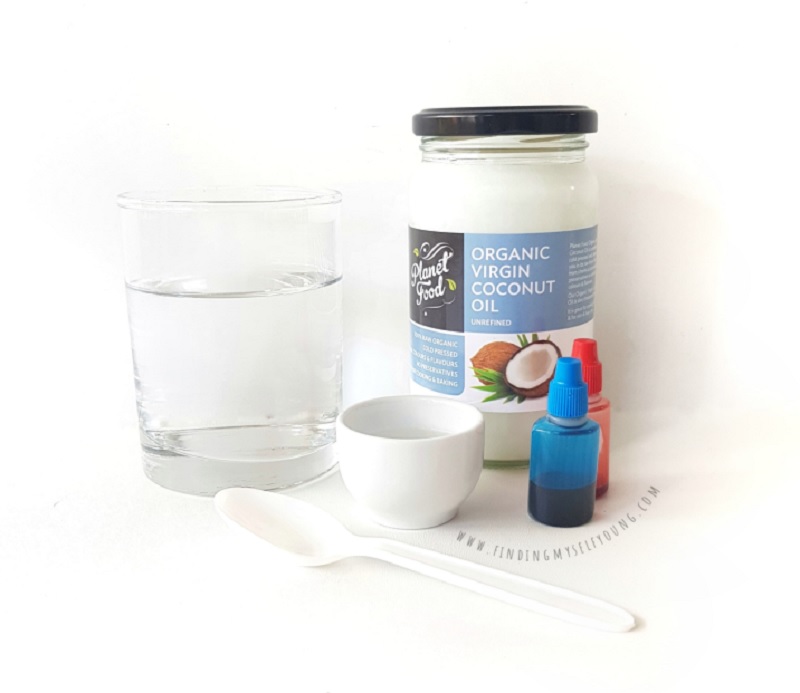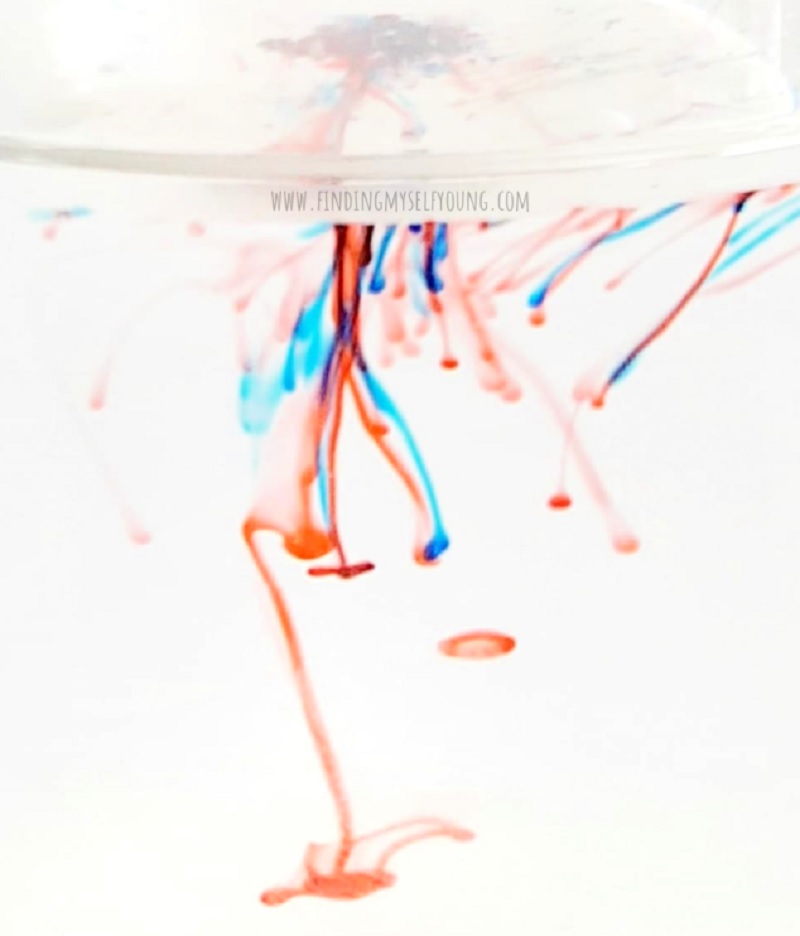If your kids are scared of real fireworks try this fireworks in a glass activity at home instead. It's a fun science experiment exploring density and a great way to celebrate New Year's Eve at home with the kids. Plus you can do it with just a few items from your pantry!
If you have younger children then you will need to do the experiment for them, however older children will be able to do it themselves. My 7yr old did this experiment on her own and was fascinated watching the fireworks drop down and blend into the water. We did this experiment as part of our New Years celebrations for the kids because they never stay up late enough to watch the real fireworks {we also did fireworks salt painting and toilet paper roll fireworks}.
SUPPLIES TO MAKE FIREWORKS IN A GLASS
- Water
- Clear glass or jar
- Oil {vegetable, canola or coconut oil}
- Food colouring
- Small bowl
- Spoon
This science experiment is so easy to do you'll probably already have all of the ingredients in your pantry right now. You can use any oil you like for the experiment, however coconut oil will give the best result as it's clear. I understand not everyone will have coconut oil on hand so rest assured the experiment will definitely still work with vegetable or canola oil. If you don't want to use a glass, or are doing this experiment with younger children then you can use a clear plastic jar instead.
It's easiest to use a brand of food colouring that comes in little dropper bottles so it only dispenses a single drop at a time {this also makes it a lot easier and less messy if the kids are doing the experiment themselves}. For the best results use 2-4 different colours, if you use too many they'll combine into a big mess at the bottom. We used only blue and red food colouring {some of which mixed to form purple} which is also a great way to turn this into a 4th of July science experiment.
HOW TO MAKE FIREWORKS IN A GLASS
1. Fill the glass {or jar} 3/4 full with water. It doesn't matter what size glass or container you use as long as it's clear.
2. Put oil of choice in the small bowl and add a few drops of food colouring on top. We used an egg cup as you only need a tiny amount of oil {enough to make a thin layer across the top of the glass}. You also only need one or two drops of each colour of food colouring.
3. Mix the oil and food colouring together using the spoon handle. The food colouring won't properly blend with the oil however it will split into smaller droplets which is what you want.
4. Pour the oil and food colouring mixture into the glass. Don't worry if some of the food colouring stays in the bowl as this can happen due to a thin film of oil on the edge of the bowl.
Once the oil settles as a layer on top of the water, the fireworks will start to fall down. When the oil is first poured into the glass it will make oil bubbles which will take a few seconds to join back together to make one layer across the top. It then takes a few more seconds for the food colouring to start falling through the oil layer.
Bigger droplets will form thicker fireworks that fall down low quite quickly and light splatters of food colouring will make tiny fireworks that fall slower and in a relatively straight line. Watch the video further below to see our fireworks in action.
THE SCIENCE BEHIND FIREWORKS IN A GLASS EXPERIMENT - HOW DOES IT WORK?
One of the first questions the kids will probably have while doing this experiment is how does the food colouring make fireworks? The answer is density!
Density in calculated by measuring an objects mass divided by it's volume. I'm sure that all sounds rather boring to kids, so a much more fun way to explain density is by watching it in action in this fireworks experiment.
Oil has less density than water which is why it floats in a layer on top of the water in the glass. Because food colouring is water based, it won't combine with the oil and instead forms the droplets that appear to float on top. However, the food colouring is more dense than the oil which is why it starts to fall through the oil layer into the water. Once it's in the water layer is starts to disperse within the water creating the fireworks streaks and blobs.
MORE FUN SCIENCE EXPERIMENTS TO TRY WITH KIDS
To keep up to date with my latest posts, play activities and book lists you can sign up to my email list or follow me on Instagram, Pinterest or Facebook. I'd also love for you to join parents from all around the world in our Facebook community Finding Play Ideas.
Disclosure - This post contains some affiliate links for your convenience, which means I may earn a small commision at no cost to you, should you make a purchase.













